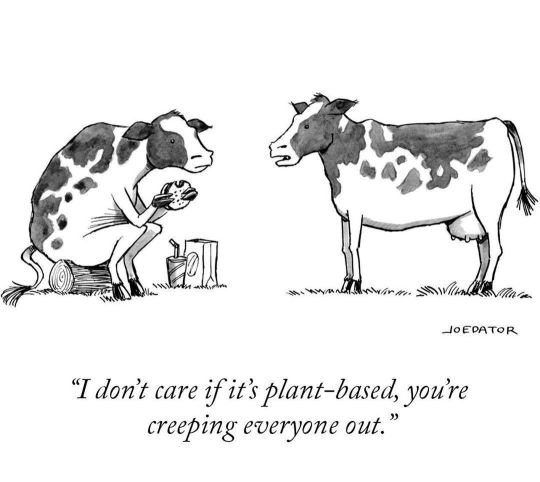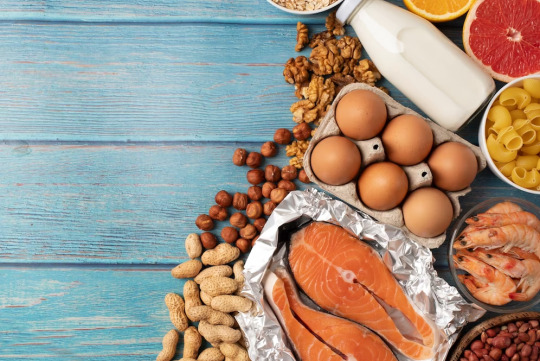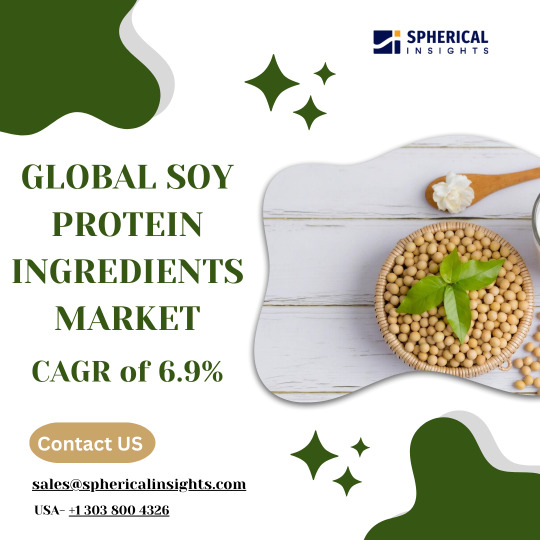#plantbasedprotein
Text

Love the taste of Philly Cheesesteak? Try this vegan version that’s just as satisfying! Recipe here: https://consciously-vegan.com/vegan-philly-cheesesteak-recipe/
#vegan #veganrecipes #veganlunch #veganrecipesideas
#vegan#veganfood#veganfoodshare#plantbased#plantbaseddiet#vegan recipes#plantbasedrecipes#vegan food#plantbasedfood#vegan comfort food#vegansandwich#plantbasedprotein#veganlunch#veganrecipes#vegan diet#plantbased food#plantbasedvegan
34 notes
·
View notes
Text
Blue Zones Diet
The term 'Blue Zones' has been coined to refer to the places in the world with the healthiest, longest-living populations, including Okinawa; Japan, Sardinia, Italy; Nicoya, Costa Rica; Ikaria, Greece; and Loma Linda, California.
On the blue zones, people eat a wide variety of garden vegetables. The best longevity foods in the blue zones diet are leafy greens such as spinach, kale, beet and turnip tops, chard, and collards. Studies have found that middle-aged people who consumed the equivalent of a cup of cooked greens daily were half as likely to die in the next four years as those who ate no greens.
Researchers have also found that people who consumed a quarter pound of fruit daily (about an apple) were 60% less likely to die during the next four years than those who didn’t.
Many oils derive from plants, and they are all preferable to animal-based fats. Olive oil is the oil most often used in the blue zones diet and evidence shows that olive oil consumption increases good cholesterol and lowers bad cholesterol.
The following simple guidelines reflect how the world’s longest-lived people ate for most of their lives.
Here's a summary of the key points:
Plant-Based Diet
Some 95% of blue zone diets food come from a plant or a plant product with animal protein limited to no more than one small serving per day.
Emphasis on vegetables, fruits, beans, nuts, seeds, and whole grains;
Leafy greens like spinach and kale are highlighted;
Consuming a cup of cooked greens daily and a quarter pound of fruit daily has been linked to better health outcomes.
Studies have found that middle-aged people who consumed the equivalent of a cup of cooked greens daily were half as likely to die in the next four years as those who ate no greens. Researchers have also found that people who consumed a quarter pound of fruit daily (about an apple) were 60% less likely to die during the next four years than those who didn’t.
Many oils derive from plants, and are all preferable to animal-based fats. Olive oil is the oil most often used in the blue zones diet and evidence shows that olive oil consumption increases good cholesterol and lowers bad cholesterol.
Limit Animal Protein
Animal protein intake is restricted to small servings, with meat consumption limited to twice a week or less;
Fish is a common source of animal protein, consumed in small portions, usually two to three times per week;
Dairy products, particularly cow's milk, are minimised, with alternatives like sheep's or goat's milk products occasionally consumed.
Limit animal protein to twice a week or even less, in servings sized no more than two ounces cooked and avoid processed meats like bacon or sausages.
In most blue zones diets people ate small amounts of pork, chicken, or lamb, eating small amounts of meat, about two ounces or less at a time, about five times per month. Neither beef nor turkey figures significantly into the average blue zones diet. It is thought that any harmful effect was counterbalanced by other food and lifestyle choices.
Healthy Fats
Oils derived from plants, particularly olive oil, are preferred over animal-based fats;
Olive oil consumption is associated with improved cholesterol levels.
Moderate Egg Consumption
Eggs are eaten occasionally, typically two to four times per week;
Eggs from free-range chickens are preferred for their nutrient content.
Reduce Meat Consumption
Meat is consumed sparingly, about two ounces or less at a time, around five times per month;
Processed meats like bacon or sausages are avoided.
On the Blue Zone diet you can eat meat twice a week or even less in servings sized no more than two ounces cooked and avoid processed meats like bacon or sausages.
In most blue zones diets people ate small amounts of pork, chicken, or lamb, eating small amounts of meat, about two ounces or less at a time, about five times per month. Neither beef nor turkey figures significantly into the average blue zones diet. It is thought that any harmful effect was counterbalanced by other food and lifestyle choices.
Fish Consumption
Fish intake is encouraged, with small portions consumed regularly, about two to three times per week;
Emphasis on selecting fish that are common and abundant and not threatened by overfishing.
You can eat up to three ounces of fish daily which is equivalent to about the size of a deck of cards before it is cooked. Select fish that are common and abundant, not threatened by overfishing. In blue zones diets, fish is a common part of everyday meals, eaten on average two to three times a week.
Please consider ethical and health considerations involved in including fish in your diet. In the world’s blue zones, in most cases, the fish being eaten are small, relatively inexpensive fish such as sardines, anchovies, all species that are not exposed to the high levels of mercury or other chemicals that pollute gourmet fish supply today. People in the blue zones don’t overfish the waters. There is no blue zones diet evidence suggesting and any particular fish should be eaten.
Ethical and Health Considerations
For example:
Inclusion of small, relatively inexpensive fish species that are not exposed to high levels of pollutants;
No specific fish is recommended, and overfishing is avoided in Blue Zones.
Dairy Reduction
Minimisation of cow’s milk and dairy products due to lactose intolerance issues;
Calcium and protein are obtained from plant-based sources like kale or tofu.
Minimise your consumption of cow’s milk and dairy products such as cheese, cream and butter. Cow’s milk does not figure significantly in any blue zones diet. In terms of the human diet, dairy is a relative newcomer, introduced about 8,000 to 10,000 years ago. Our digestive systems are not optimised for milk or milk products and now we recognize that a significant number of people have some difficulty digesting lactose.
While western diets have relied on milk for calcium and protein for decades, in the blue zones diet people get these nutrients from plant-based sources such as kale or tofu, both of which provide as much calcium as a cup of milk.
Small amounts of sheep’s milk or goat’s milk product are eaten in a blue zones diet and goat’s and sheep’s milk products figure prominently in the traditional diets of both the Ikarian and Sardinian blue zones.
Eggs Consumption
Eggs are considered acceptable for consumption, providing complete protein and various essential nutrients;
Eggs from free-range chickens are preferred.
Eggs are consumed in all blue zones diets, where people eat them an average of two to four times per week. As with meat protein, the egg is a side dish, eaten alongside a larger portion of a whole-grain or other plant-based feature.
Eggs in the blue zones diet come from chickens that range freely, eat a wide variety of natural foods, do not receive hormones or antibiotics, and produce slowly matured eggs that are naturally higher in omega-3 fatty acids. Factory-produced eggs come to maturity about twice as fast as eggs laid by breeds of chickens in the blue zones.
Eggs provide a complete protein that includes amino acids necessary for your body plus B vitamins, vitamins A, D, and E, and minerals such as selenium.
Other foods on the Blue Zone diet include beans, nuts, sourdough bread. When it comes to beverages, you should drink between 6-8 glasses of water a day. It is okay to drink tea, coffee, and red wine in moderation
In summary
The key principles of the Blue Zones diet include focusing on plant-based foods, limiting animal protein intake, consuming fish in moderation, reducing dairy consumption and enjoying eggs occasionally. By following these simple guidelines inspired by the world's healthiest and longest-living populations, you can improve your overall health and well-being. (Source: bluezonescom)
For more inspirational, lifestyle blogs, please check out my site https://www.thecpdiary.com
#thecpdiary#blog#blue zones#bluezonesdiet#healthy#healthy diet#plantbasedprotein#healthylifestyle#healthyliving#health#longevity#nutrientdense#holisiticnutrition#healthandwellbeing#physical wellness
2 notes
·
View notes
Photo

Plant based 🌱 🐮 #plantbasedfood #plantbasedprotein #cowhumor #vegangirl #cowlove #darkhumor (at Catalina Foothills, Arizona) https://www.instagram.com/p/CmPvqFCv7YETyKEtJeowAR0fmkZ0_CjH6kz90w0/?igshid=NGJjMDIxMWI=
15 notes
·
View notes
Text

🌱💪 When we think of protein, many of us automatically turn to meat. But guess what? There are fantastic alternatives out there, and quinoa is one of them! 🌾🌿
Quinoa is a tiny but mighty grain that is not only gluten-free but also packed with high-quality protein. It's a complete protein source, meaning it contains all nine essential amino acids our bodies need. 💪🌾
This superfood is versatile and can be incorporated into various dishes. From salads and stir-fries to pilafs and Buddha bowls, quinoa adds a nutritious punch and a delightful texture to your meals. 🥗🍲
What's more, quinoa is rich in fiber, iron, and magnesium, making it a nutrient powerhouse. It's a fantastic option for those following a vegetarian or vegan lifestyle, or anyone looking to diversify their protein sources. 🌱✨
To enjoy quinoa, simply rinse it well and cook it according to the package instructions. You can also experiment with different flavors by adding herbs, spices, or even a squeeze of lemon juice to enhance the taste. 🍚🍋
So, why not give quinoa a try and embrace the wonders of plant-based protein? Your body and the planet will thank you! 🌍💚
#ProteinPower#HealthyChoices#QuinoaLove#MeatlessMonday#PlantBasedDiet#NutritionTips#VegetarianLife#BalancedEating#HealthyLiving#PlantBasedProtein#QuinoaPower
3 notes
·
View notes
Text
Maximizing Your Protein Intake: Top Foods to Add to Your Diet

Protein is an essential nutrient that is crucial for building and repairing tissues, maintaining healthy muscles, and supporting a strong immune system. Eating a diet that is rich in protein can also help you feel fuller for longer, reduce cravings, and aid in weight loss. Here are some top protein-packed foods to add to your diet.
Chicken Breast - Chicken breast is a lean source of protein that is low in fat and calories. A 3-ounce serving of chicken breast contains about 25 grams of protein. It's a versatile protein source that can be cooked in various ways, such as grilled, roasted, or baked.
Greek Yogurt - Greek yogurt is a creamy and delicious way to add protein to your diet. It's an excellent source of calcium and probiotics, which are essential for gut health. A 6-ounce serving of Greek yogurt contains about 18 grams of protein.
Lentils - Lentils are a plant-based protein source that is high in fiber and complex carbohydrates. They are also rich in iron, folate, and other essential nutrients. A 1-cup serving of cooked lentils contains about 18 grams of protein.
Quinoa - Quinoa is a gluten-free grain that is high in protein and essential amino acids. It's also rich in fiber, iron, and magnesium. A 1-cup serving of cooked quinoa contains about 8 grams of protein.
Tuna - Tuna is a fish that is high in protein and omega-3 fatty acids, which are essential for heart health. A 3-ounce serving of canned tuna contains about 20 grams of protein. It's an easy protein source that can be added to salads or sandwiches.
Cottage Cheese - Cottage cheese is a low-fat dairy product that is high in protein and calcium. A 1-cup serving of cottage cheese contains about 28 grams of protein. It's a versatile protein source that can be eaten as a snack or used in recipes such as smoothies or dips.
Almonds - Almonds are a rich source of plant-based protein, healthy fats, and fiber. A 1-ounce serving of almonds contains about 6 grams of protein. They are a convenient and delicious protein source that can be eaten as a snack or added to salads or oatmeal.
Conclusion
Maximizing your protein intake can be achieved by adding a variety of protein-rich foods to your diet. These include chicken breast, Greek yogurt, lentils, quinoa, tuna, cottage cheese, and almonds. Incorporate these foods into your meals and snacks to help you meet your daily protein needs. Remember to choose lean sources of protein and vary your protein sources to ensure you are getting all the essential amino acids your body needs.
#proteinrichfoods#balanceddiet#healthyfood#nutrition#mealplanning#fitnesstips#healthylifestyle#plantbasedprotein#leanprotein#omega3fattyacids#healthycooking#healthysnacks#mealideas#weightloss#musclebuilding#energyboost
2 notes
·
View notes
Video
The 1 Tip Heart Attack & Stroke Survivors Wish They Knew Earlier Manage your cholesterol without feeling deprived—reduce red meat to transition from high risk to heart-healthy. 00:20 - The Problem with Red Meat 🥩➡️🚫 Find out why reducing red meat is essential for your heart health and what you can eat instead! ❤️🔍 00:29 - Power of Plant-Based Proteins 🌿 Unlock the secrets to a stronger heart with legumes, beans, and lentils—your tasty red meat alternatives! 🍲💪 00:39 - Healthy Alternatives to Red Meat 🍗🥦 Explore delicious, heart-healthy alternatives to red meat that you'll love adding to your meals! 😋👍 01:04 - Breakthrough Diet Changes 🌟 How small diet adjustments lead to big health wins! 🎉📈
0 notes
Text

#SoyProtein#PlantBasedProtein#VeganProtein#SoyProteinIsolate#SoyProteinConcentrate#ProteinIngredients#HealthyEating#Nutrition#PlantBasedDiet#SoyProducts#SoyNutrition#VegetarianProtein#HealthyLiving#SoyBenefits#ProteinSources#SoyHealth#CleanEating#SoyRecipes#FitnessNutrition#SoyBased#ProteinSupplements
0 notes
Text

Plant-Powered Protein: The Vegan’s Guide to Protein-Rich Foods
Hey there, health enthusiasts! Are you ready to power up your plant-based diet with protein-packed goodness? Whether you’re a seasoned vegan or just dipping your toes into the world of plant-based eating, getting enough protein is essential for maintaining muscle mass, supporting cell growth and repair, and keeping you feeling full and satisfied.
But where do vegans get their protein, you ask? Fear not! We’ve got you covered with a roundup of some of the best vegan sources of protein to fuel your body and keep you thriving:
1. Lentils: These little legumes are a powerhouse of protein, fiber, and essential nutrients. Whether you’re whipping up a hearty lentil soup, tossing them into salads, or making a flavorful lentil curry, lentils are a versatile and delicious addition to any meal.
2. Chickpeas: Also known as garbanzo beans, chickpeas are a staple in many vegan diets. Roast them for a crunchy snack, blend them into creamy hummus, or toss them into salads and stir-fries for an extra boost of protein and fiber.
3. Quinoa: This ancient grain is not only a complete protein but also packed with vitamins, minerals, and antioxidants. Use quinoa as a base for salads, stir-fries, or Buddha bowls, or enjoy it as a nutritious side dish.
4. Tofu and Tempeh: These soy-based protein powerhouses are incredibly versatile and can be used in a wide variety of dishes. Whether you’re grilling up tofu skewers, marinating tempeh for a hearty sandwich, or adding them to stir-fries and curries, tofu and tempeh are excellent sources of plant-based protein.
5. Nuts and Seeds: Almonds, peanuts, chia seeds, hemp seeds, and pumpkin seeds are all packed with protein, healthy fats, and essential nutrients. Sprinkle them on top of oatmeal, yogurt, or salads, or enjoy them as a satisfying snack on their own.
6. Beans: From black beans and kidney beans to navy beans and pinto beans, the options are endless when it comes to beans. Add them to soups, stews, chilis, and salads for a protein boost that will keep you feeling full and satisfied.
7. Seitan: Made from wheat gluten, seitan is a meaty and versatile protein source that’s perfect for vegan cooking. Use it in stir-fries, sandwiches, tacos, and more for a hearty and satisfying meal.
So there you have it, folks! With a little creativity and some delicious plant-based ingredients, getting enough protein on a vegan diet is easier than ever. So go ahead, embrace the power of plants, and fuel your body with the protein it needs to thrive!
Stay healthy!
#plantbasedprotein#veganprotein#healthy eating#plantbaseddiet#nutrition#vegetarian#healthyliving#meatlessmonday#plantpowered#veganrecipes#healthy recipes#cleaneating#plantbasedcooking#vegetarian meals
0 notes
Text

Consider incorporating more whole grains into your meals!
https://www.life-enthusiast.com/
#GrainsForGains#LeanProtein#PlantBasedProtein#HealthyChoices#NutritionFacts#WholeGrainGoodness#MeatFreeProtein#HealthierOptions#BalancedDiet#FunFact
0 notes
Photo

Vegan Sticky Baked BBQ Tempeh Strips from One Green Planet
Calling all vegans. This recipe for Sticky Baked BBQ Tempeh Strips from One Green Planet is a must-try. Get ready to satisfy your cravings with this guilt-free and flavorful dish.
0 notes
Text

Peanut Curry. Peanuts are a good source of plant-based protein. Including peanut butter in the curry adds protein content, which is essential for building and repairing, Read the full recipe
https://foodrecipesoffical.com/wp-admin/post-new.php
foodrecipesoffical.blogspot.com
#PeanutCurry#HealthyEating#PlantBasedProtein#GoodFats#VitaminsAndMinerals#Antioxidants#WeightManagement#BloodSugarControl#DigestiveHealth#FiberRich#ImmuneBoosting#HeartHealthy#VegetarianOption#VeganFriendly#GlutenFree#BalancedDiet#NutrientDense#HealthyRecipes#CleanEating#Wellness
0 notes
Text
0 notes
Text
Tofu Market
Tofu Market size was valued at US$ 260.87 Bn. in 2022 and the total revenue is expected to grow at 5.2% through 2023 to 2029, reaching nearly US$ 371.99 Bn.
0 notes
Text

Powrtein makes you less hungry and gives you more energy. It helps you lose weight and makes you feel more mentally alert, remember things better, and feel happier and more creative.
It's a type of protein powder made from plants that your body can easily digest.
You can buy it here: https://www.life-enthusiast.com/shop/exsula-powrtein-superfood/
#Powrtein#EnergyBoost#WeightLossSupport#MentalClarity#MemoryBoost#MoodEnhancement#CreativityBoost#PlantBasedProtein#EasyDigestion#HealthyLiving
0 notes